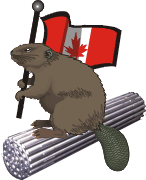I was wondering if anyone has tried grinding down 750 headers and placed them on a 600? I found a set that came off of 2000 and I'm thinking about putting them on my 06' 600 Kat. I read this great article article written by CyberPoet http://www.motorcycleanchor.com/katana/header.html in regards to modification procedures but I wanted to make sure the 2000 750 headers will fit on my '06 600.
I'm hoping I won't have to rejet the carbs but I will if I have to heh
I'm hoping I won't have to rejet the carbs but I will if I have to heh








Comment